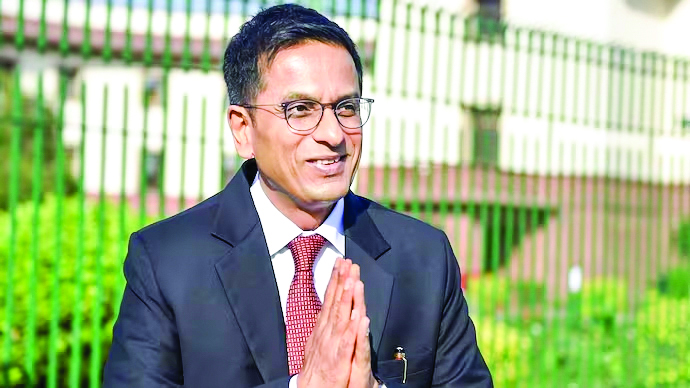
The health system in a certain place is often a palimpsest which bears traces of both current and historical social and cultural (and health) practices. Health is also a deeply political issue. Legendary German physician Rudolf Virchow in the nineteenth century summarized his belief in the inseparability of medicine and politics. Virchow regarded medicine as not merely the study of human disease but also a general metaphor for understanding society. It’s time we fathom Virchow’s words when he said that “health is a social science, and politics is nothing more than medicine on a large scale”.
The conditions in which a person lives, learns, works, and ages contribute to his/her health more than any other factor. While medical care receives the most attention, studies have consistently shown its small relative impact on health, when compared with social determinants. Medical care is estimated to account for only 10-20 percent of the modifiable contributors to healthy outcomes for a population. The other 80 to 90 percent are broadly called the SDoH: health-related behaviors, socioeconomic factors, and environmental factors. The social circumstances/determinants are in turn shaped by a wider set of forces: economics, social policies, and politics. Ignoring social determinants influencing health and investing solely in medical/clinical care in a healthcare system may lead to an inverted proportion of spending and health outcomes in a country.
Decisions about political, economic and resource distribution made outside the health sector need to consider health as an outcome across the social distribution, as opposed to focusing solely on increasing productivity. A Health in All Policies approach can go some way to ensure this consideration, and we present evidence that some countries are taking this approach. However, given entrenched inequalities, there is still some way to go.
Policymakers are recognizing the importance of the social determinants of health and incorporating them into public policy, indicating a shift from the traditional medicalized approach which countries have taken to solve their healthcare problems. This approach offers a way to reduce medical costs for individuals, insurers and the government, while improving outcomes, and it is worth further consideration and creative implementation. In the USA, a recent authorization for Medicare Advantage plans to cover non-medical benefits indicates a shift toward a more comprehensive approach to healthcare.
The National Health Policy 2017 seemed to have relegated SDoH to ecological factors such as pollution and individual risk factors such as exercise and diet with hardly any attribution to larger political and economic frames and the way power and policy is distributed. It would be right to make health a political issue, thus undoing a wrong turn in the trajectory of understanding health needs. Though the policy recognizes the link between health outcomes and its social determinants, it reflects a perfunctory attitude towards public health, which is apparent in the paragraph regarding the “social determinants of health” (which has been included mercifully in the “Situation Analysis” document). The situation analysis document sees the use of phrases like “context of rapid economic growth and changing life styles”, eclipsing the phenomenon of “poverty” that constitutes the most important context of the lives of those millions of people whose interests are the most affected by this health policy.
What determines someone’s health is a combination of genetic predisposition, behaviors, the medical services received, and social and physical environments. Recent estimates attribute 30 percent of health outcomes to genetics, 40 to 50 percent to behavior, and 20 percent to the social and physical environments. Individual behavior and the environment are often studied together as the non-medical determinants of health. The leading causes of death in the United States – cancer, heart disease, and chronic respiratory disease –are tied to unhealthy behaviors such as smoking and poor diet.
While the healthcare delivery system impacts health during episodes of injury or illness, the social determinants interact with health much earlier, and on a day-to day basis. They encompass the conditions in which people live, learn, work and age, along with the broader social positions in which individuals find themselves that impact health.
Conflict also exacerbates existing health inequalities. Due to the challenges of working in conflict contexts, there is a lack of evidence to support best practices in emergency response, particularly regarding the application of social determinants in these settings.
Mounting international evidence clearly demonstrates that morbidity and mortality follow socio-economic gradients that cannot be explained by health behaviors and diverse biological characteristics. Limited options at work, home or in the neighborhood restrict possibilities for people to live healthy lives. Not surprisingly, public health research shows that efforts to improve health behaviors are the most successful among those who can afford to live well, hold safe jobs and live in unpolluted and secure neighborhoods.
Social determinants can impact health directly, as well as indirectly, by shaping how people behave. Poverty, unemployment, and housing insecurity are all examples of social determinants that result in poor health outcomes. Of course, while the factors and conditions considered here are referred to as “social determinants,” they may be more aptly discussed as “influencers” or “predictors” rather than direct determinants of an individual’s or community’s health status. Most of these conditions are highly correlated with one’s health but not necessarily causal; further, all SDoH (except race) can change throughout one’s life.
The socioeconomic group into which an individual is born is both determined by and a determinant of other social determinants, interacting with many of them to dictate what choices an individual has, and thus how they behave. SES (socio-economic status) determines where a person can afford to live, the amount and quality of schooling one can afford, and in many cases, the type of job an individual can obtain. But despite the many obstacles that might make upward mobility particularly challenging for those with low SES, one’s SES can change over the course of their life.
If the history of public health teaches anything, it is that social justice is the foundation of public health–and this fact will stand the test of time through the decades. We believe that public welfare must be placed before corporate welfare and social equality must be given higher priority than freedom of the economic market.
In Rudolf Virchow’s words, medicine is a social science in its very bone and marrow. In reality, medicine is the science of the healthy as well as of the ill human being. And what other science is better suited to propose laws as the basis of the social structure, in order to make effective those which are inherent in man himself? Once the interests of the privileged no longer determine the course of public events, the physiologist and the practitioner will be counted among the elder statesmen who support the social structure.
The writer is a medical doctor (pathologist) and holds an MA in Creative Writing from the University of London. The views expressed are personal.















